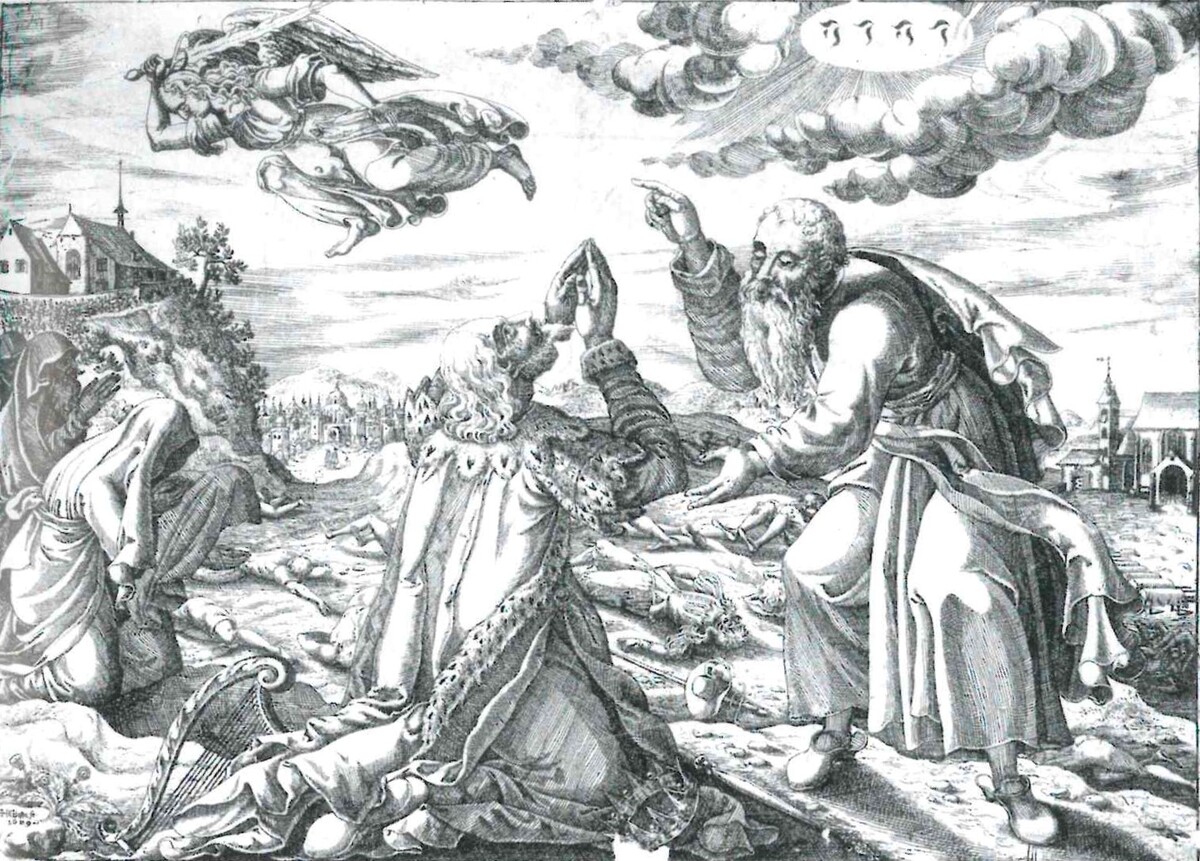Source

Source: Hans Heinrich Glaser, Die Pest, Etching, 1629. Staatsarchiv Basel-Stadt, BILD Falk. A 249.
Hans Heinrich Glaser (1585-1673) was a Basel artist and engraver and an important chronicler of seventeenth-century life in Europe, in general, and Basel, in particular. His work covered themes as diverse as religion, politics, everyday life, and the Thirty Years’ War. This 1629 etching reflects the devastation of the plague in Basel that same year, a particularly difficult year in a period of one of the last intensive plagues for the region. Glaser himself had lost his father, sister and brother-in-law to the plague that year, and this etching highlights both the human agony of plague and the incorporation of themes of divine punishment in its arrival.

Source: Hans Heinrich Glaser, Die Pest, Etching, 1629. Staatsarchiv Basel-Stadt, BILD Falk. A 249.
Staatsarchiv Basel-Stadt
Daniel Burckhardt-Werthemann, “Hans Heinrich Glaser: Ein Basler Künstler aus der Zeit des Dreißigjährigen Krieges,” Basler Jahrbuch, 1897: 144-186.
E. A. Eckert, "Spatial and Temporal Distribution of Plague in a Region of Switzerland in the years 1628 and 1629," Bulletin of the History of Medicine, 56(2), 1982: 175.
Kaspar von Greyerz, “Glaubenswelten – Glaubenserfahrungen,” in Handbuch der Religionsgeschichte im deutschsprachigen Raum. Leiden: Brill, 2008, pp. 352–356.